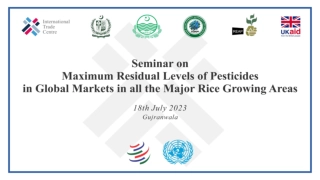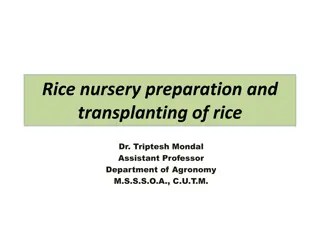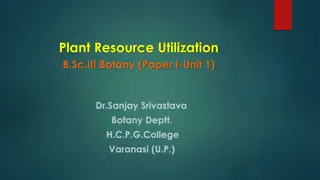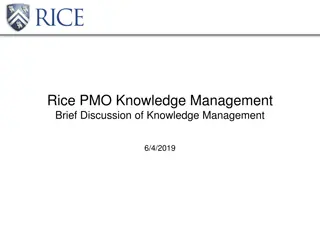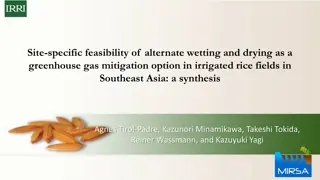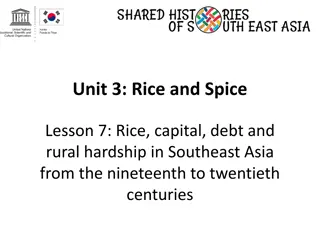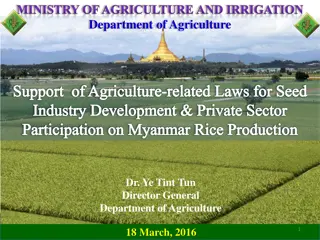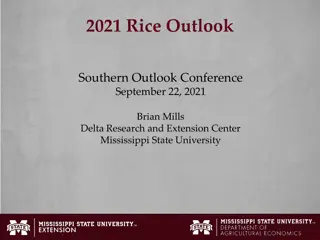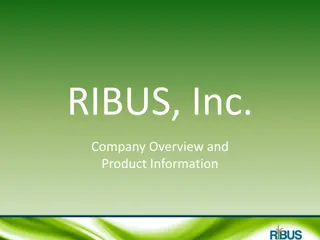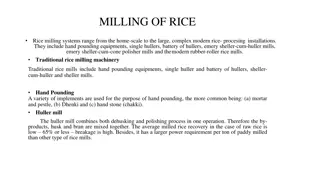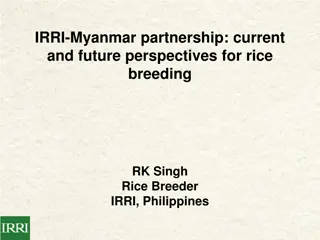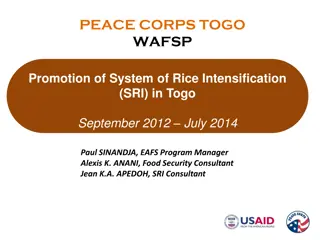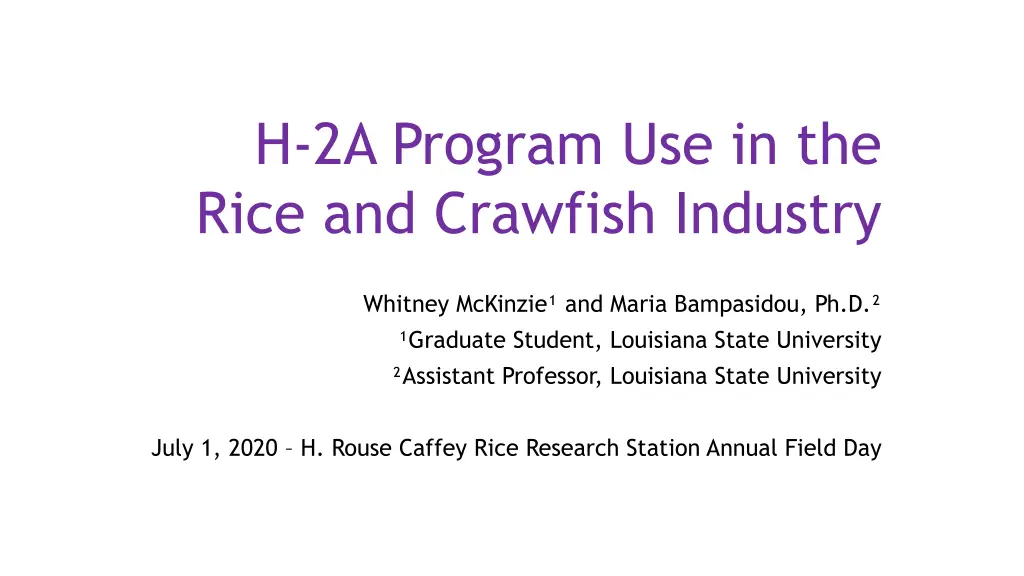
Utilizing H-2A Program in Louisiana's Rice and Crawfish Industries
Explore the increasing enrollment in the H-2A program as a solution to the farm labor shortage in Louisiana's rice and crawfish industries. Learn about the benefits, challenges, and application trends in these vital sectors.
Download Presentation

Please find below an Image/Link to download the presentation.
The content on the website is provided AS IS for your information and personal use only. It may not be sold, licensed, or shared on other websites without obtaining consent from the author. If you encounter any issues during the download, it is possible that the publisher has removed the file from their server.
You are allowed to download the files provided on this website for personal or commercial use, subject to the condition that they are used lawfully. All files are the property of their respective owners.
The content on the website is provided AS IS for your information and personal use only. It may not be sold, licensed, or shared on other websites without obtaining consent from the author.
E N D
Presentation Transcript
H-2A Program Use in the Rice and Crawfish Industry Whitney McKinzie and Maria Bampasidou, Ph.D. Graduate Student, Louisiana State University Assistant Professor, Louisiana State University July 1, 2020 H. Rouse Caffey Rice Research Station Annual Field Day
Farm labor shortage Because labor is becoming more difficult to find, the labor supply has become less elastic in recent years (Charlton, 2019) Availability of willing farm workers from Mexico has decreased in recent years (Charlton et. al, 2019) Educational opportunities Past patterns Continuous reduction in US farm workers (Charlton and Taylor, 2019) Demographic changes Employment opportunities Demand for physical labor remains high during peak seasons of agricultural production (Guan et al., 2015; Bampasidou and Salassi, 2019)
About the H-2A program The H-2A program is a US governmental program that allows domestic producers to hire seasonal, foreign labor to obtain legal, temporary employment in the US (Garcia, 2014) Domestic producers must prove that no available US farm workers are able to perform these jobs, ensure no wages and working conditions of US farm workers are adversely impacted, and provide housing and transportation to the international hires (Luckstead and Devadoss, 2019) H-2A enrollment is on the rise (US Department of Labor; Bampasidou and Salassi, 2019) 43% increase of application requests from 2008-2018 37.5% increase in application certification from 2008-2018
Rice and crawfish industries in Louisiana The rice and crawfish industries are two of the top three industries that consistently request H-2A laborers in Louisiana annually. Rice Production: Crawfish Production: $297.6 million in total gross farm value 54% of gross farm value $120 million economic impact $372.7 million economic impact Largest aquaculture sector in Louisiana 17% of all rice grown in US 6,840 lbs. produced per acre Contributes $172.1 million to state economy
Applications Rice and Crawfish FY2015-FY2019 FY2015 149 FY2016 238 FY2017 236 FY2018 250 FY2019 238 Crawfish Applications Filed ---- 60% -1% 6% -5% % change from previous year Note: Authors calculations using data from the OFLC data center FY2015 FY2016 FY2017 FY2018 FY2019 Rice Applications 121 102 122 126 167 Filed % change from previous year Note: Authors calculations using data from the OFLC data center ---- -15% 19% 3% 32% Between FY2015-FY2019, we generally see an increase in the number of applications filed with the USDOL in both industries each year. Slight decreases are observed; however, they are followed by substantial increases in later years.
FIGURE 1: H-2A WORKERS IN RICE PRODUCTION, FY2015-FY2019 Program use: Rice FY2015-2019 902 896 Between FY2015-FY2019, both the number of workers requested and certified in the rice industry followed an upward trend. On average, 99% of the workers requested in the rice industry received temporary certification to provide services under the H-2A program. Wages ranged from $9.87-$11.33 per hour, depending on the adverse wage rate effect. 690 685 NUMBER OF WORKERS 630 609 553 552 431 428 2015 2016 2017 YEAR 2018 2019 Requested Certified
Program use: Crawfish FY2015- 2019 FIGURE 2: H-2A WORKERS IN CRAWFISH PRODUCTION, FY2015-FY2019 1518 1514 1488 1436 1403 1357 1336 1332 Like the rice industry, both the number of workers requested and certified in crawfish production followed a generally upward sloping trend. On average, 98% of the workers requested by crawfish producers during this period are given a certification by the USDOL. NUMBER OF WORKERS 941 940 Wages in the crawfish industry also ranged from $9.87-$11.33 per hour. 2015 2016 2017 2018 2019 Requested Certified
Comments The H-2A program continues to being a program that farmers rely to secure workers especially during peak seasons. Farmers complain on not being able to secure workers on time. Bureaucracy and heavy paperwork have been some of the reasons related to that. Industry specific examination can shed more light to the hiccups either programmatic or administrative of the H-2A program.
Thank you For questions and comments, please reach out to Maria Bampasidou mbampasidou@agcenter.lsu.edu Visit the Farm Labor series for information on labor topics. This work was funded through the A. Wilbert s Sons scholarship.
References Garcia, P. 2014. Documenting and classifying labor: the effect of legal discourse on the treatment of H-2A workers. Archival Science, 14(3-4), 345- 363. Luckstead, J. and Devadoss, S. 2019. The Importance of H-2A Guest Workers in Agriculture. Choices 34(1). LSU AgCenter. 2017. Louisiana Summary: Agriculture and Natural Resources. LSU Agricultural Center. Louisiana Seafood. Industry . Louisiana Seafood. McClain, W.R. and Romaire, R. 2007. Procambarid Crawfish: Life History and Biology. Southern Regional Aquaculture Center. SRAC Publication No. 2403 Think Rice. 2019. Where is Rice Grown. U.S. Department of Agriculture. 2018. Louisiana Crop Production Report. United States Department of Agriculture. U.S. Department of Labor. 2019. Foreign Labor Certification: Disclosure Data Washington, DC: U.S. Department of Labor.

